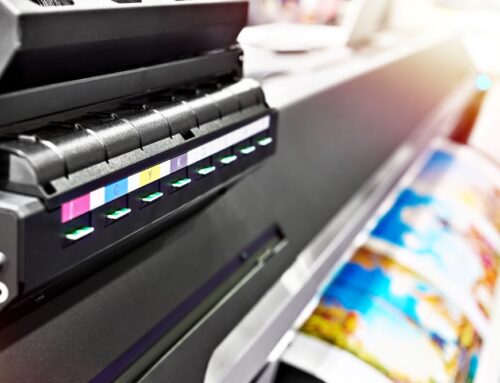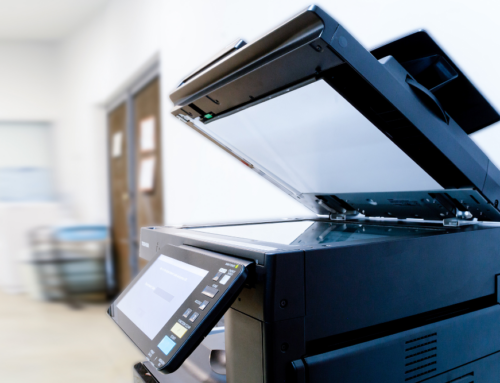Even though we live in the digital age, many businesses rely on paperwork and documentation for various needs. Whether it’s contracts, invoices, or other documents, paper is often the lifeblood of big and small organizations. Printers can make a massive difference in the operational efficiency of these companies. Choosing the right model ensures you can optimize your logistics and keep your business running smoothly. But, what kind of printers are best? This article will look at production printers and whether they’re a good fit for your needs.
Intro to Production Printers
Printers come in all shapes and sizes, but production printers are firmly on the high end of the spectrum. While desktop and consumer-grade models work well for small batches, production printers are designed for heavy use.
Some of the primary features of production printers include:
- Variable Paper Sizes – You can print on legal paper, card stock, mixed media, synthetic materials, and even linens. No size or shape is too complex for these machines.
- High-Speed Operations – Do you need to print 1,000 flyers in a day? A production printer can do that and more. These units are made for large print volumes, so you don’t have to worry about jams, shortages, or damaged components.
- Complicated Graphics Capabilities – These models are ideal for print shops that produce a wide array of graphical elements. Examples can include calendars, postcards, flyers, posters, and more. If you only print documents in black and white, you probably don’t need a production printer.
Benefits of Production Printers
Before you decide to purchase a production printer, you need to know what to expect. Here are the principal benefits or leasing or purchasing these impressive machines:
- Flexibility – You can print virtually anything on a production printer. Whether you need a single proof or 10,000 copies, one device can handle it all. Since you can utilize multiple media and materials, you can create far more content than you could with a regular inkjet or laserjet printer.
- Heavy Volume – Typically, large organizations benefit the most from production printers because they have so many documents to handle. These printers can produce up to 65 pages per minute, meaning that large-scale projects are no problem. Plus, since you don’t have to send your materials to a third-party shop, you can get faster turnaround times. What could take three days may only take one with a production printer.
- Cost-Efficiency – Yes, production printers require extra care and maintenance to continuously perform at their peak. However, you can save a lot more money than you would by outsourcing your printing needs. The cost of paper and other supplies is far less than the markup you can find at various print stores. Plus, if you buy these items in bulk, you can save even more.
- Better Quality – Production printers have excellent clarity and resolution, particularly given how fast they operate. You can get high-quality images in half the time it would take a standard multifunction printer to do the same thing. If you have demanding clients that want perfection, a production printer ensures you can over-deliver your products.
- More Security and Control – One primary issue with sending your print projects to third-party shops is they may not be secure. If you’re printing sensitive or proprietary documents, you have to worry about potential leaks and breaches. Unless you want to send NDAs to your print shop partner, handling everything in-house is much better.
While these benefits are impressive, there are also some potential downsides to production printers. Here are a few reasons you might not want to invest in one of these machines.
- Single-Function Use – MFPs are valuable for small businesses because they can fax, scan, copy, and print. Production printers can only do one of those things, although admittedly very well. If you want to streamline your operations, an MFP might be a better investment.
- High Costs for Low Volume Printing – If you’re not printing tons of documents at once, a production printer may not be a good idea. Since these machines are built for high-capacity jobs, they’re often too expensive for smaller operations.
Do We Need a Production Printer In-House?
Even after reviewing the benefits, it’s hard to say whether a production printer is a wise investment. Here are some questions to ask before making a final decision:
How Many Documents Do You Print?
If you only have occasional print jobs, a production printer will be too bulky and expensive. Realistically, you should calculate the costs of sending your prints to a third-party printer and weigh them against the price of a production printing machine. If you’ll save money overall, buying the printer is a good idea.
How Much is Ongoing Maintenance?
Production printers can often cost more than $25,000, with some models in the six-figure range. With machinery that complex and expensive, repairs can also be costly. When shopping for a model, be sure to ask about maintenance plans so that you can plan accordingly.
How Vital is Printer Security?
If you handle private or sensitive information (e.g., a law firm), it’s best to keep everything in-house as much as possible. Production printers often have better security measures than a standard inkjet or MFP.
Do You Need Multiple Print Production Lines?
Some production printers can handle more than one job simultaneously. This feature makes these printers far better than MFPs, which can only do one job at a time. Of course, you will need to pay more for multi-purpose machines, but you can save time and money in the long run.
Now that you know more about production printers, it’s time to schedule a call with one of our Kelly Office Solutions representatives. We can walk you through the process and help you find the right model to suit the needs of your Charlotte, Greensboro, or Winston-Salem business. We make it easy to compare features and units, so you make the best decision for your company. Contact us today.




Leave A Comment
You must be logged in to post a comment.